News

Grants of up to €3,000 to obtain C and D driving licenses: a key opportunity for professional drivers
Would you like to work as a professional truck or bus driver, but the cost of the license is holding you back? You're in luck! The government has approved a call for direct aid of up to €3,000 per person to obtain Class C and D driving licenses. This measure is part of the Reconduce Plan, an initiative of the Ministry of Transport and Sustainable Mobility to attract new professionals to the road transport sector, which is currently suffering from a worrying shortage of qualified drivers.With a budget of €500,000, these subsidies cover not only the cost of the license, but also other expenses associated with obtaining it. If you meet the requirements, this could be your opportunity to get guaranteed training, improve your employability, and access a sector with a real demand for professionals.
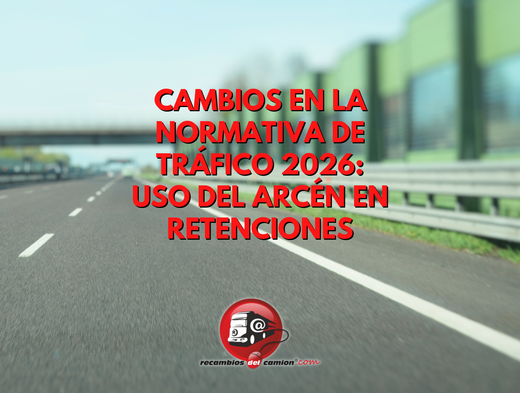
Changes to traffic regulations 2026: use of the shoulder in traffic jams
Starting in 2026, the Spanish Directorate General of Traffic (DGT) will generally allow certain vehicles to drive on the hard shoulder in cases of traffic congestion. This amendment to the General Traffic Regulations represents a significant change in traffic management and could have a positive impact on the mobility of millions of drivers.Until now, passenger cars were not allowed to drive on the hard shoulder, except for justified reasons. With the new approach, its use will be permitted on specific sections of road and under clear conditions: adequate signage and a maximum speed of 30 km/h.
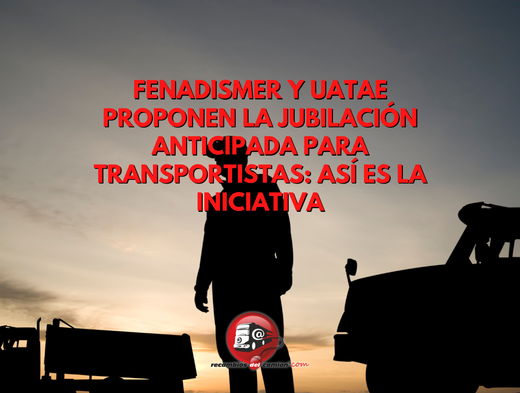
Fenadismer and UATAE propose early retirement for transport workers: this is the initiative
The profession of self-employed hauler has always been characterized by effort, perseverance, and resilience. For decades, thousands of drivers have traveled the roads of Spain and Europe, enduring long hours, demanding physical conditions, and a great deal of responsibility. Now, a new debate is emerging in the sector: should self-employed haulers have the right to early retirement?Recently, the main industry associations, Fenadismer and UATAE, have formally requested that an early retirement scheme with reduced pension coefficients be applied to this group. This request is based on Royal Decree 402/2025, which allows professions with particularly harsh working conditions to retire before the standard legal retirement age. The news has generated intense debate and raises multiple implications for both hauliers themselves and the entire road transport ecosystem. This article analyzes in depth the reasons for this request, the legal steps being taken, possible future scenarios, and how all of this may influence the structure and operation of the transport sector, including businesses that revolve around it, such as vehicle maintenance, buying and selling, and, of course, spare parts.
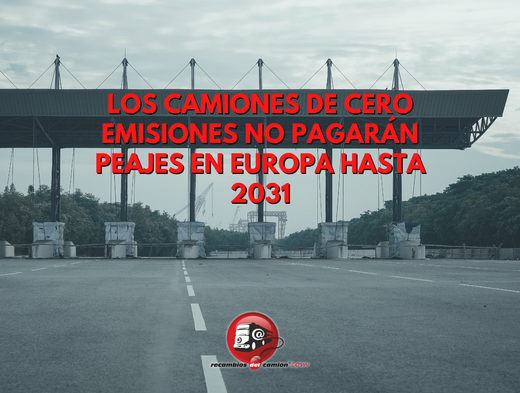
Zero-emission trucks won't pay tolls in Europe until 2031.
The European Parliament has approved a key reform to the Eurovignette Directive that will allow zero-emission trucks and buses to circulate without paying tolls or road user charges until June 30, 2031. This measure, still pending formal approval by the EU Council, represents an important step forward in the decarbonization strategy for heavy transport and aims to accelerate the transition towards more sustainable mobility across the continent.With 458 votes in favor, 182 against and 11 abstentions, Parliament has shown majority support for this initiative which, although optional for Member States, introduces a strong and direct tax incentive for those fleets that opt for clean technologies such as electric or hydrogen trucks.
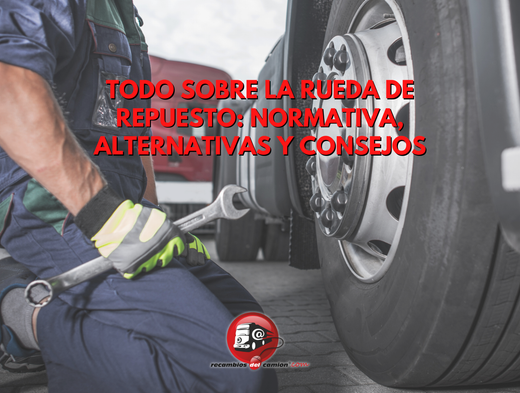
All about the spare wheel: regulations, alternatives, and tips
A simple puncture can completely ruin your plans. Imagine being in the middle of a trip, on a secondary road or on the highway, and suddenly noticing how your car loses stability. One of the most common but also most stressful situations for any driver is facing a flat tire. In those moments, the key question is: am I prepared for this?Although Spanish law does not require carrying a spare tire, it does require your vehicle to have a system that allows you to continue your journey in the event of a puncture. This rule, more flexible than many believe, opens the door to various options: traditional wheels, temporary wheels, puncture-proof kits, or run-flat tires. But which is the safest? What are the advantages of each alternative?In this article, we're going to take an in-depth look at all the available solutions, their legality, their risks, and the most sensible recommendations so that if you're faced with a flat tire, you'll know how to act without endangering your safety or that of other road users.
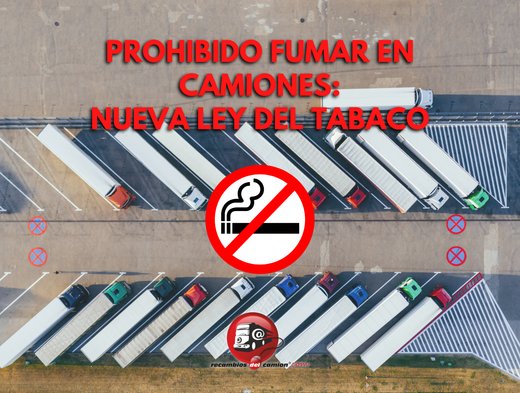
Smoking prohibited in trucks: new Tobacco Law
The Council of Ministers has approved the Preliminary Draft Tobacco Law, a legal reform that introduces important changes in the fight against smoking in Spain. One of the points that has generated the most debate directly affects the transport sector: the ban on smoking in work vehicles, such as trucks or vans, even when the driver is alone in the cabin.This new regulation, promoted by the Ministry of Health, is part of a broader effort to strengthen smoking prevention policies and adapt legislation to new nicotine-derived products, such as electronic cigarettes or heated tobacco devices.Before entering into force, the preliminary draft must complete its parliamentary process, so there is no definitive date yet for its implementation. However, the public consultation process has already been opened, in which autonomous communities, social organizations, and other stakeholders can participate.
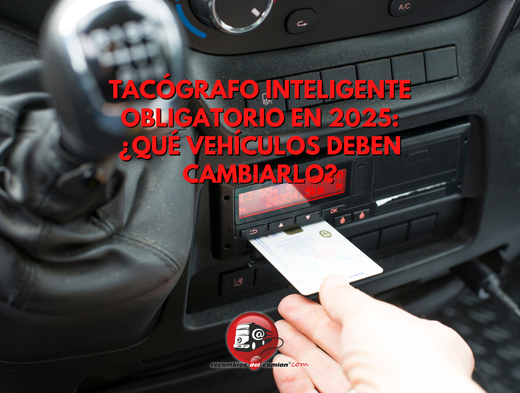
Smart tachographs mandatory in 2025: which vehicles must have them replaced?
In 2025, the European road transport sector faces a key transformation: the implementation of the new second-generation smart tachograph. This change is not isolated, but part of a much broader reform known as the Mobility Package, promoted by the European Union to improve road safety, regulate drivers' working conditions, and promote fairer competition in international transport.This article clearly and directly explains which vehicles are required to install the new tachograph, what the deadlines are, what penalties entail for not adapting, how to make the change, and what other regulations the Mobility Package brings. If you are a haulier or manage a fleet, this will be of great interest to you.

Barreiros, the story of a legendary brand - Part III: decline, legacy, and the end of an era
After a decade of rapid expansion, constant innovation, and consolidation as an industrial leader, Barreiros found itself in a privileged position within the Spanish automotive sector by the end of the 1960s. However, the tide was beginning to change.In this third and final installment of our series, we address the company's most complex period: Chrysler's gradual entry into its shareholding, management changes, internal tensions, and, finally, Eduardo Barreiros' departure from his own company. We'll see how these transformations profoundly affected the brand's identity and led, in just a few years, to its demise as an independent project.But we'll also talk about what remained: Barreiros' industrial, technical, and human legacy, which still excites automotive enthusiasts and professionals today. A story that, although it came to an abrupt end, lives on in the memories of many people.

Barreiros, the story of a legendary brand - Part II: the industrial boom
After laying the foundations of his empire with the founding of Barreiros Diésel, S.A., Eduardo Barreiros embarked on an ambitious period of expansion and consolidation. With an advanced industrial vision and a practical and efficient approach, Barreiros knew how to take advantage of the needs of the Spanish market in the 1950s and 1960s, modernizing transportation and paving the way for a new generation of vehicles manufactured in Spain.In this second chapter, we review how the company consolidated itself as one of the country's leading industrial leaders, how it diversified its production, and how the collaboration with international brands that would shape the company's future emerged.
- Page 1 of 34
- Next
Opinions of our clients
Receive our news